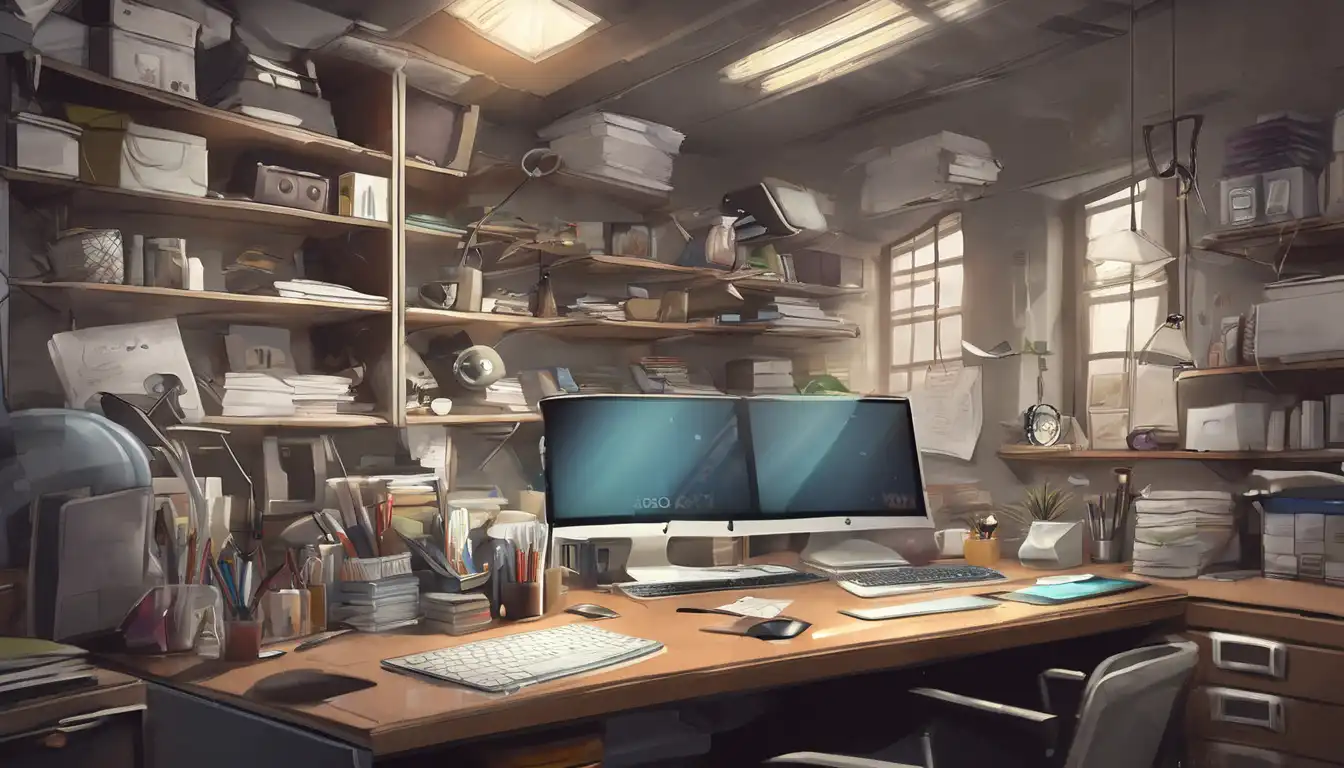Why Your Workspace Matters More Than You Think
Your physical environment plays a crucial role in your ability to concentrate and maintain productivity. Research from the Journal of Environmental Psychology shows that organized workspaces can improve focus by up to 32% compared to cluttered environments. Whether you work from home or in a traditional office, creating an intentional workspace setup can dramatically impact your mental clarity and work output.
The Psychology Behind Workspace Organization
Clutter isn't just a physical problem—it's a cognitive one. When your workspace is disorganized, your brain has to work harder to filter out distractions, leaving less mental energy for important tasks. Studies indicate that visual clutter competes for your attention, making it harder to concentrate on the task at hand. By organizing your workspace, you're essentially clearing mental real estate for deep work.
The Cost of Disorganization
Disorganized workspaces don't just affect focus—they impact your entire workday. The average professional spends approximately 4.3 hours per week searching for documents and items in their workspace. That's over 200 hours per year lost to unnecessary searching. Implementing effective organization strategies can reclaim this valuable time.
7 Essential Strategies for an Optimal Workspace
1. Start with a Digital Detox
Before addressing physical clutter, tackle your digital workspace. Organize your computer desktop, create logical folder structures, and unsubscribe from unnecessary email lists. A clean digital environment reduces cognitive load and makes finding files effortless. Consider using productivity apps to streamline your digital workflow.
2. Implement the Zoning Method
Divide your workspace into functional zones based on your work activities. Create distinct areas for computer work, reading, writing, and storage. This spatial organization helps your brain associate specific locations with particular tasks, enhancing mental focus when you transition between activities.
3. Master Cable Management
Tangled cables create visual chaos and practical hazards. Use cable organizers, zip ties, or adhesive clips to keep cords neat and out of sight. Proper cable management not only improves aesthetics but also makes cleaning and equipment changes much simpler.
4. Optimize Your Lighting Setup
Lighting significantly affects focus and eye strain. Position your desk to maximize natural light while minimizing glare on screens. Supplement with task lighting for detailed work, and consider blue light filters for evening work sessions. Proper lighting can reduce eye fatigue by up to 51% according to workplace ergonomics studies.
5. Create an Ergonomic Foundation
Your physical comfort directly impacts your ability to focus. Invest in an ergonomic chair that supports proper posture, position your monitor at eye level, and ensure your keyboard and mouse allow for relaxed arm positioning. Small adjustments to your seating arrangement can prevent discomfort that distracts from work.
6. Establish a Paper Management System
Even in digital age, paper clutter remains a common focus killer. Implement a simple filing system with clear categories and regular purging schedules. Use vertical files for active projects and archive completed work promptly. This system ensures important documents are accessible without creating visual noise.
7. Incorporate Personal Touches Strategically
While minimalism has its benefits, completely sterile environments can feel uninspiring. Add meaningful personal items that motivate you without creating clutter. A single plant, family photo, or inspirational quote can provide psychological benefits without compromising organization.
Maintaining Your Organized Workspace
Organization isn't a one-time event—it's an ongoing practice. Develop daily and weekly habits to maintain your optimized workspace. Spend five minutes at the end of each day resetting your space, and schedule monthly deep-cleaning sessions. Consistency is key to sustaining the focus benefits of an organized environment.
The 5-Minute Daily Reset
Before finishing work each day, quickly tidy your workspace: file loose papers, clear your desktop, and wipe down surfaces. This simple habit ensures you start each morning with a clean slate, mentally preparing you for productive work.
Advanced Organization Techniques
Color Coding for Visual Efficiency
Use color strategically to categorize information quickly. Color-code files, folders, or even digital calendar entries to create visual shortcuts that speed up information retrieval. This technique leverages your brain's natural ability to process color information rapidly.
Implementing the "One-Touch" Rule
Handle each item only once whenever possible. When you pick up a document, decide immediately whether to file, act on, or discard it. This prevents the accumulation of "decision piles" that clutter workspaces and drain mental energy.
Measuring the Impact on Your Focus
After implementing these organization strategies, track your focus improvements. Notice how much quicker you transition into deep work states, how often you get distracted, and how efficiently you locate needed items. Many professionals report being able to complete complex tasks 20-30% faster in well-organized environments.
Remember that workspace organization is highly personal—what works for one person might not work for another. Experiment with different approaches and adjust based on your specific work requirements and personal preferences. The goal isn't perfection, but creating an environment that supports your best work.
For more productivity tips, check out our guide on effective time management techniques or explore our resources on optimizing your home office setup. Small changes to your workspace can yield significant improvements in focus, productivity, and overall job satisfaction.
